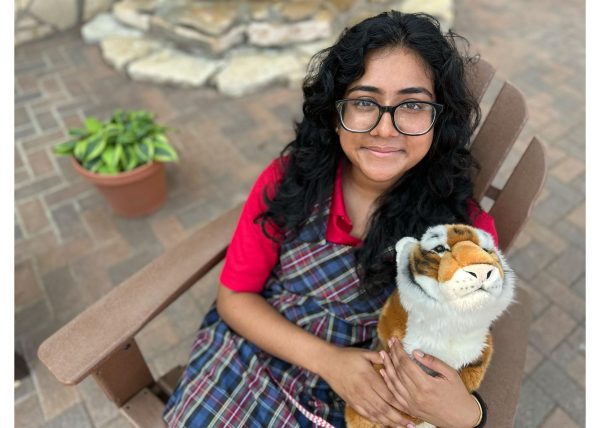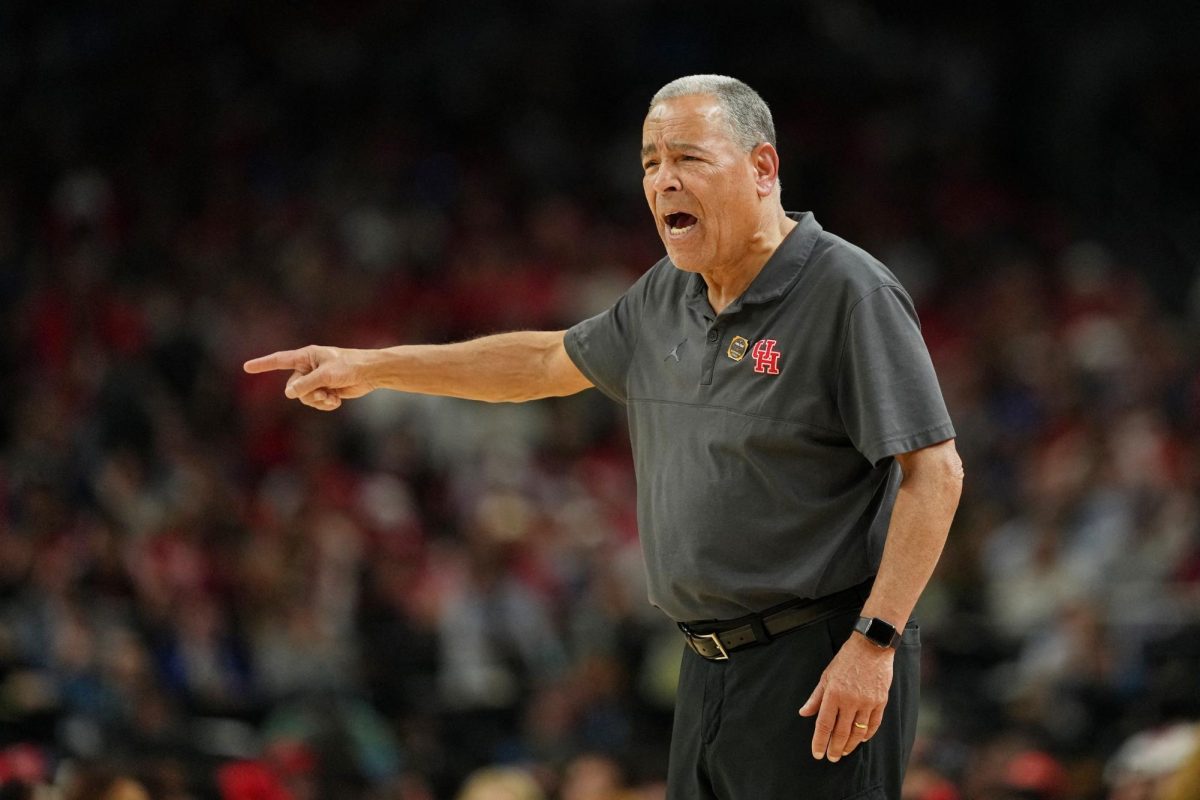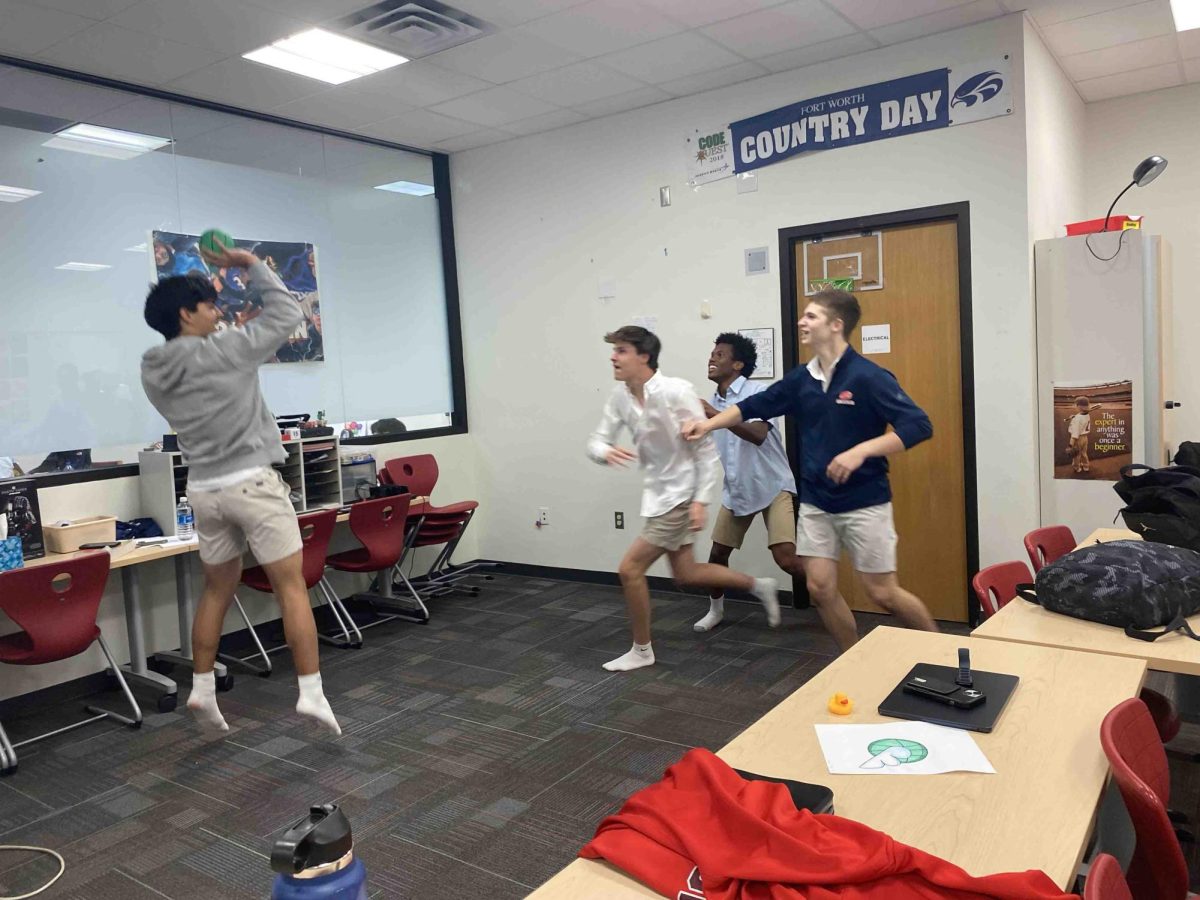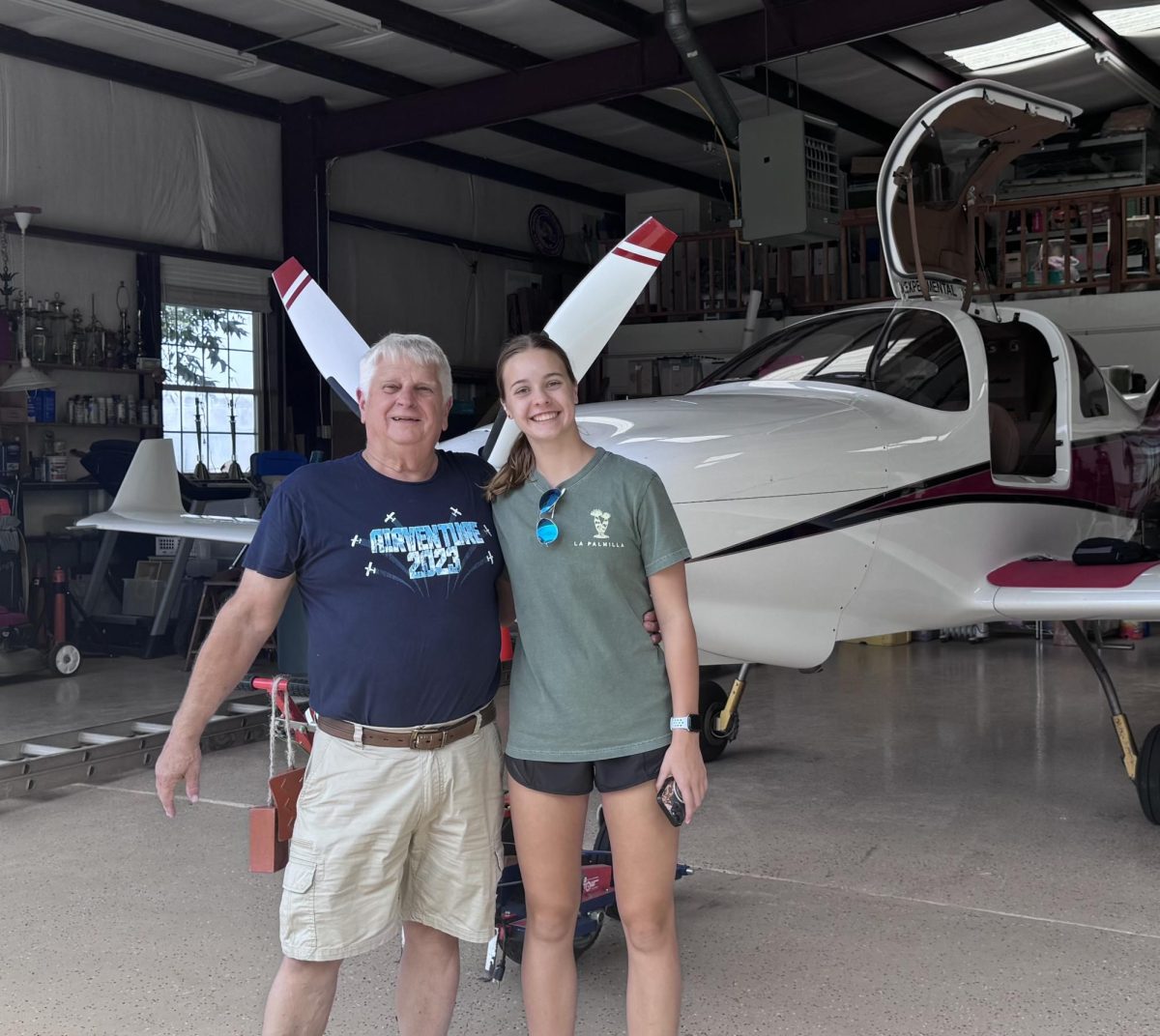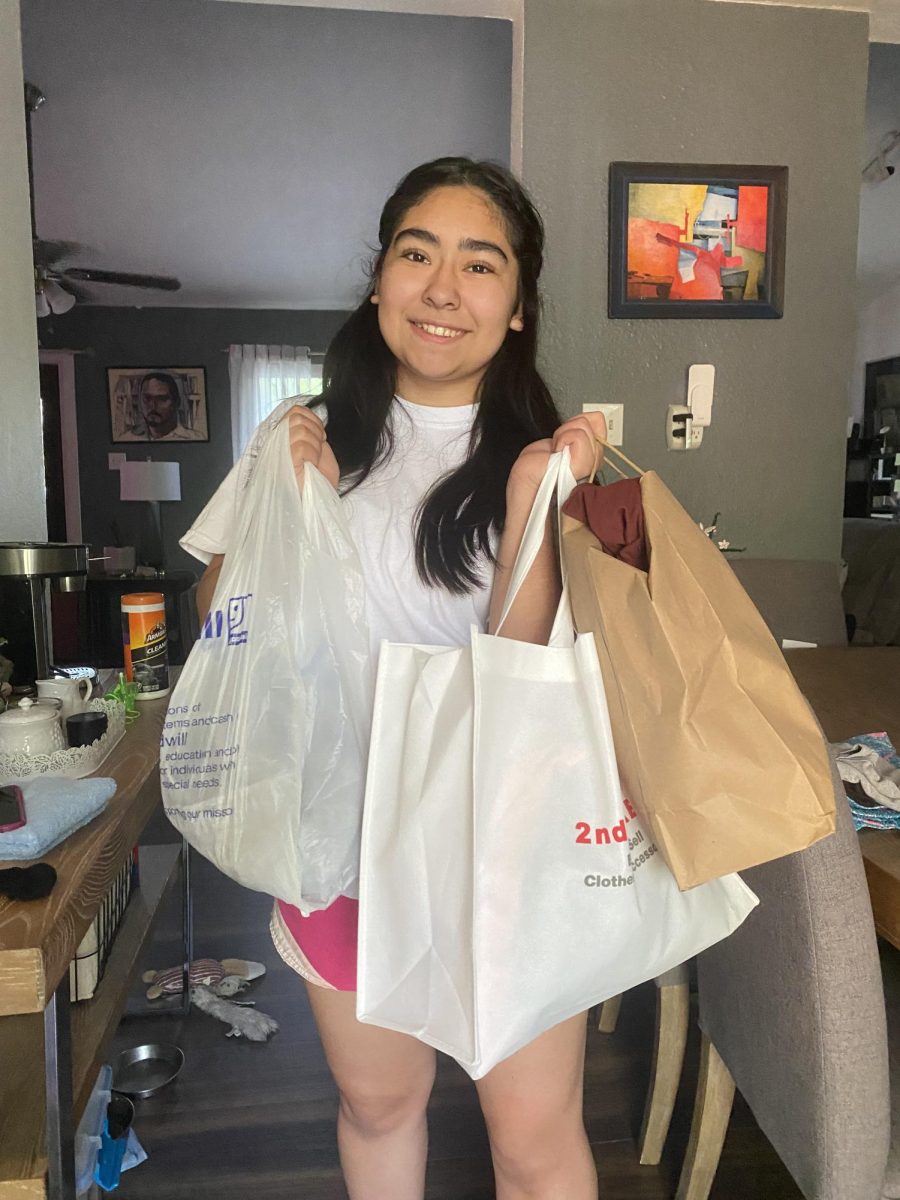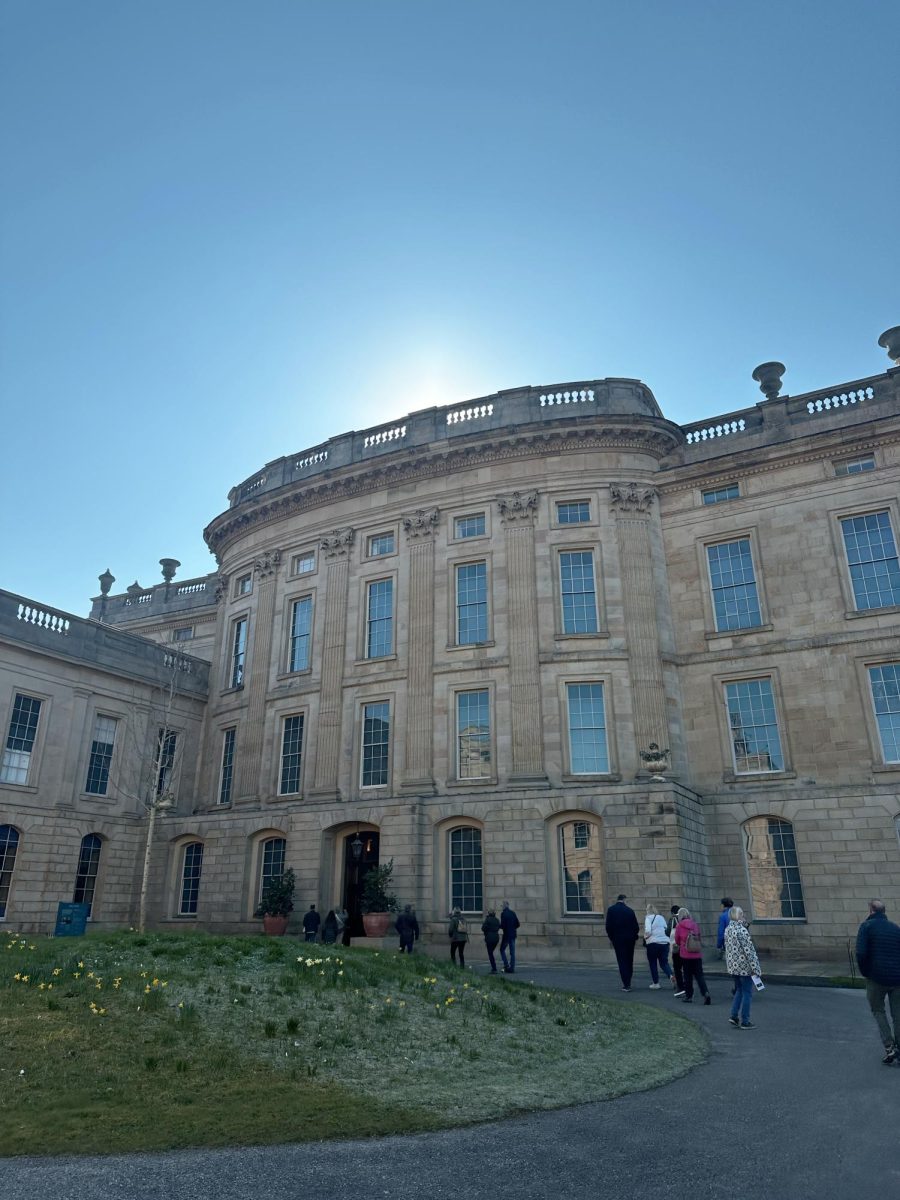FWCD Takes On San Antonio
The letters OUR in the photo represent the mantra “our the people” for SDLC in 2022.
January 24, 2023
On November 28, six FWCD students (Abbie Proell ‘24, Shamya Freeney ‘24, James Thomas ‘24, Carolina Zamorano ‘25, Nara Acua Guba ‘25, Aero McCormack ‘25) went on a trip to San Antonio to attend the Student Diversity Leadership Conference (SDLC). Director of Community Engagement and Inclusion, Nicole Masole, and US Learning Specialist, Erica Carswell, organized the attendance. The group returned on December 3.
There were approximately 7800 attendees, which included both students and adults. The days lasted from approximately 8:15 a.m. to 10:00 p.m., with many activities in between.
The adults and students were separated into different conferences. The students attended the SDLC and the adults attended the People of Color Conference (POCC).
“There were people from all across the country and also 10 other countries, so the perspectives were very diverse,” Proell said.
Freeney also commented on the wide range of locations that the participants traveled from, but she also stated a commonality in the students.
“There were students at the conferences that had very similar experiences and environments to me because we attended either a private or boarding school,” Freeney said.
“I got to meet people from so many other schools and different backgrounds that I could collaborate with,” Masole said.
Masole also commented on the wide demographic in the adult conference.
“There were people from every background you could think of: age, race, ethnicity, socioeconomic status, but we were all educators at independent schools,” Masole said.
Since there were so many students, the groups were broken up into smaller groups called family groups of around 30 people. All the FWCD students were placed in different groups.
“I really liked [the smaller groups with non-FWCD students] because it forced me to branch out and talk to new people and meet new people,” Proell said.
Freeney agreed with Proell.
“The first thing you had to do was talk to a stranger, so it got you out of your comfort zone really quick,” Freeney said.
Freeney expanded on the connections she made in the family groups.
“These are people [family groups] that you were going to spend a lot of time with. It made me nervous because I was with people I did not know, but I became really close with them,” Freeney said.
Another group were affinity groups, which were groups that people identified with.
“The affinity groups for me were kind of like a party the entire time. There were times to be serious and talk about difficult topics, but there were also times we were just dancing,” Freeney said.
Proell commented on how she gained new and strong connections with other students.
“I was able to discuss things that I would not necessarily feel comfortable discussing with just anyone, even though they were strangers,” Proell said.
Masole commented on the purpose of affinity groups in the adult session.
“In affinity groups we would get together and celebrate who we are and what kind experiences certain people have being an educator coming from different backgrounds. We talked about how we can continue to support each other in our career,” Masole said.
In the groups, there were many discussions and stories told.
One activity was that all the students would sit in a circle and a question would be asked. Then, students would volunteer to speak and four were selected to move to the middle of the circle. Each person in the middle would have a minute to share their response.
“The conversations in the middle were like absorbing someone else’s experience,” Freeney said.
Freeney also said the discussions prompted her to learn that “sometimes it’s time for you to talk and sometimes it’s time for you to listen. ”
Another activity that the family groups participated in was set up with an outer and inner circle. The circle would rotate so students would talk to other students they had not before.
“The staff would introduce topics and prompt discussion, but it was set up for the students to lead,” Proell said.
Other activities included drawing, agreeing and disagreeing with statements, and listening to speakers.
“One activity I really enjoyed was when we created a comic strip about cognitive dissonance surrounding one of our cultural identifiers, so we got to explain something that sparked thought for [us],” Proell said.
“The conference exposed me to a lot of different issues that I’ve been privileged enough not to really have to think about, and I really appreciated hearing different perspectives,” Proell said. “The things we discussed altered my perspective on issues and I think that I’ll really carry that with me.”
Freeney stated she found the conference eye-opening as well.
“It [the conference] was very eye-opening because you don’t know what someone is going through by just looking at them,” Freeney said.
A question raised during one of the keynote presentations that stuck out to Freeney was: “What makes you think you can just show up like that?”
“It was a really simple question. It asked me why I can be who I am and do what I do everyday. It is a question I am still trying to figure out,” Freeney said.
“[The Conference was] nothing like anything I have experienced. I can’t put an adjective to it. I felt so connected to people who were strangers five days prior, ” Freeney said.
The POCC had workshops, affinity groups, and keynote speakers throughout the day.
“We could attend workshops, we could network with other educators, we could stop by the book store, or listen to the keynote speakers,” Masole said.
During free periods, the educators would often connect and organize activities with one another.
“I got to meet people that I would usually communicate with through email or different organizations but I finally got to see them in person. I strengthened a lot of relationships that I had with people,” Masole said.
Workshops were meetings, where presenters would share ideas on certain topics about equity and its involvement in everyday life.
“Workshops varied from personal to professional things. There could be a workshop on creating a safe environment for students or there could be financial and investment work. The number of people attending workshops ranged from 30 people to hundreds of people depending on the popularity of the session” Masole said.
Masole led a workshop with a colleague from Trinity Valley School on how to support students better.
“The workshops were so joyful and interactive,” Masole said.
There were a lot of discussions during the affinity groups which had differing perspectives.
“There is so much that makes up someone’s identity so we each had differing characteristics, opinions, and perspectives,” Masole said.
She expanded on her thoughts by saying “Our experiences shape our identities.”
Masole, along with the students, appreciated how SDLC felt like a safe, welcoming environment. “You could share your heart and struggles and your joys and successes and feel supported,” Masole said. “POCC creates a feeling that I can show up and be my full authentic self and show all the different parts of myself and still be loved and welcomed.”
Masole commented on how the students were the most moving part of the conference.
“I was inspired by SDLC because it reminded me of the importance of students’ voices in creating and ensuring an inclusive school and community. We need to remember the students’ opinions because they know what they want their school to look like,” Masole said.
The conference ended with students teaching their school’s faculty one of the activities they had done during the past days at the conference. The six Country Day students decided to lead an activity on Cognitive Dissonance.
“Seeing our six student leaders lead the adults in discussions was just so powerful for me,” Masole said.
Masole said she was inspired by the conference and wanted to bring the ideas she had discussed back to FWCD.
“How do I continue to help and encourage our students and faculty to grow? Not just understand our inclusivity statement, but understand the importance of being inclusive leaders” Masole said.
She wants to begin by holding a session with all the students that have attended SDLC in the past.
“I just want to gain their insight and discuss how we can elevate the environment of inclusivity in school and just uplift students and faculty more,” Masole said.




